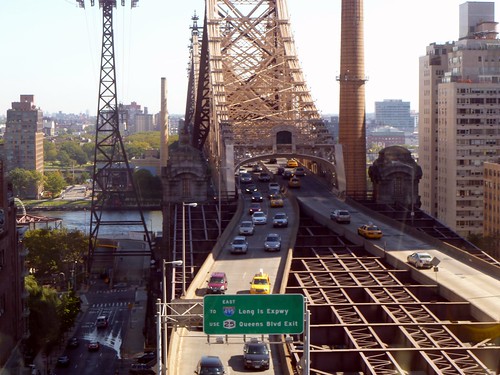On this blog there’s a lot of talk about cable as a flexible and adaptable technology for urban transit. CPT can travel above roads and traffic, go through buildings, and cross rivers and gorges. But for all that to work there needs to be space for towers and stations, too.
So what happens when a city’s simply got no space?
They deal.
Take New York City, for example. The Roosevelt Island Tram’s been dealing with this problem for 35 years by building a tower right over a road. Of course they did, because the system has three towers, two of which are located in Manhattan, the most densely populated New York City borough and the country’s densest county.
Then there’s a system in Romania, where the city of Piatra Neamt built a cable car system, of which an entire kilometer traverses the city — towers and all.
To do this they built a tower in a road median . . .

Image courtesy of Doppelmayr.
. . . one over a parking lot . . .

Image courtesy of Doppelmayr.
. . . and even one on top of a sidewalk, so as not to obstruct pedestrian traffic underneath.

Image courtesy of Doppelmayr.
Now, we’re not saying this is the best way to go about designing towers. Remember, there are practical designs and then there are pretty designs.
London and Portland have the aesthetics down pat. Both cities dedicated a lot of thought and effort (not to mention a few dollars) to create stunning architectural towers, and in return have (or will soon have) practical works of art, so to speak.
But the adaptability seen in New York and Piatra Neamt should not go unnoticed either. As drab and industrial as the tower designs are, they represent a collaboration that can exist between municipalities and transit planning when both parties add a bit of imagination and ingenuity to the mix.
The important question here is how to blend the practicality of New York and Piatra Neamt with the beauty of London and Portland. That’s the challenge and the opportunity.


2 Comments
gondola project Piatra Neamt was the best experience from my life.